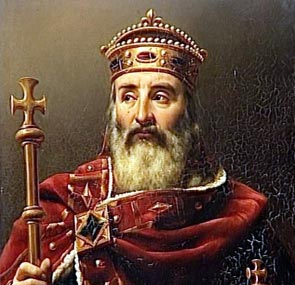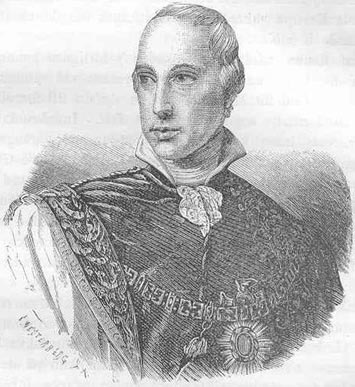The Holy Roman Empire
What was the Holy Roman Empire?

The Holy Roman Empire was the medieval state that embraced most of Central Europe and Italy under the rule of the German kings from 962 to 1806. It was considered to be a restoration and continuation of the ancient Roman Empire, although it had little in common with its predecessor.
The Holy Roman Empire was first established by Charles the Great (Charlemagne), but it declined after his rule because most of his successors were relatively weak and ineffective. The rule of Henry I the Fowler, German King (919-36), represented an improvement in matters because he forced dukes in the old eastern areas which were once under Carolingian rule to submit to his authority. After he died, his son Otto I, Holy Roman emperor (962-73) and German king (936-73), ruled a vast region.
Otto was a much better ruler than his predecessors, and he sought to expand his authority by assuming the power of lay investiture. The act of placing someone in the office of clergy was called "investing" them, which also included at the time granting them land which would help support them. These lands were royal estates, making these clergy members servant of the ruler and beholden to him. This had a profound effect on Otto's power, but mostly at the expense of the power of the popes, resulting a conflict later called the Investiture Conflict.
In 962 Otto moved into Italy and took over Rome, forcing Pope John XII (955 - 964) to crown him Emperor. This move upset the Byzantine Empire because they regarded themselves as the true inheritors of Roman rule. They also did not believe that the Western pope had any authority to declare someone emperor. Eventually, however, they accepted this development.
For much of its history, the Empire consisted of hundreds of smaller sub-units, principalities, duchies, counties, Free Imperial Cities and other domains.
The fall of the Holy Roman Empire

The fall of the Holy Roman Empire was a process that took place over many years. The most obvious explanation for this decline was that it was not an empire in the classical sense at all, meaning it had very little central control over its various parts. The empire was made up of hundreds of different kingdoms, principalities, duchies and free cities that were populated by various ethnic and, by the Late Medieval Period, religious groups. The goal of appeasing the desires of these various entities was an unrealistic one and with an emperor whose local influence was minimal, maintaining a cohesive national identity was impossible.
Unlike most empires of the time, the Holy Roman Empire did not have a hereditary dynastic ruling family in which the the title of emperor was passed down from parent to offspring (or, when there was no offspring, a close relative). It is true that families such as the Hohenstaufen's and Hapsburg's did maintain dynasties within the empire. However, the emperors from these families did not gain the crown through hereditary means. Rather, the office of emperor was an elected position voted on by the Prince-Electors who were the clerical and secular rulers of the most powerful states within the empire. With each new election the incoming emperor would have to buy the necessary votes of the Electors by granting concessions to their various territories. Thus, each new emperor, a position already limited in power, was weaker than the last.
From the Late Medieval through the Modern Period, the Holy Roman Empire would see many of its Imperial territories unite to different European states. By this time, while the person of emperor remained the legal head of state, rule of the empire was in the hands of local princes, dukes, earls, bishops, etc. With the Peace of Westphalia in 1648 ending the Thirty Years War, the imperial territories were given almost complete power and the Swiss Confederation and Northern Netherlands gained complete independence from the empire. The ruling Hapsburg's turned their attention to the family's hereditary lands in Austria and their real power from this point was as Archduke of Austria. The final nail in the imperial coffin was driven home in 1806 when France, under Napoleon's military and political rule, defeated the Third Coalition at the Battle of Austerlitz where the last emperor, Francis II was abdicated.